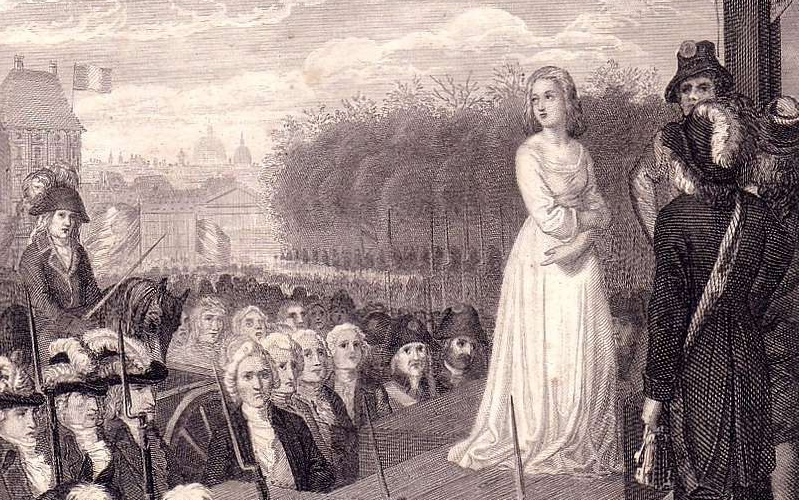
On October 16, 1793, the tragic end came for Marie Antoinette, who, after having been a symbol of opulence and disdain in an era marked by inequality, was taken to the guillotine. That young Austrian who came to Versailles to become queen found herself, at the end of her life, alone and without the favor of a people she had once ruled. Her last days in the prison of the Conciergerie were marked by pain, humiliation and irreversible loss. Why did the revolutionary people consider her death necessary, when in fact her power had always been limited? Here we unravel her last moments and the background to her execution, a symbolic act in the history of the French Revolution.
The Fall of Marie Antoinette: From Queen to Prisoner
Marie Antoinette arrived in France at age 14, a young Austrian princess whose mission was to seal the alliance between her country and the French crown. Over the years, she earned the distrust and contempt of many for her life of luxury, her extravagant parties and her apparent indifference to the misery of the people. While the French suffered, the profligacy of Versailles became the face of the Ancien Régime. When the revolution broke out and Louis XVI was executed, Marie Antoinette lost her status, and was imprisoned in the Conciergerie. Prison conditions were harsh; accounts mention her passage from opulence to a cold, dark cell, with barely enough to subsist on. Separated from her children and isolated, she quickly began to lose the glow that once characterized her.
The "Marie Antoinette Syndrome": A Reflection of Pain and Stress
Chronicles of the time mention that Marie Antoinette's hair turned white in a matter of nights. This phenomenon, known today as the "Marie Antoinette syndrome," is an extreme response to stress and reflects the profound emotional impact her situation had on her. The burden of separation from her children and the knowledge of her probable fate aged her precipitously and visibly. To many, her white hair and gaunt face were a sign of the anguish she faced, of a woman who had lost all hope. In October 1793, Marie Antoinette was subjected to a public trial. The accusations against her ranged from conspiracy to betray France to the improbable and cruel accusation of incest with her own son, a clear attempt to discredit her. She tried to defend herself, but the trial was decided in advance. In her response to the most hurtful accusation, she merely appealed to the mothers present in court, reminding them of a mother's unwavering love for her child, a gesture that moved some witnesses. However, her fate was already written: the court sentenced her to death.
The Final Procession: A Queen in Silence, a People in Ecstasy
On October 16, she was taken to the Place de la Revolution in a roofless cart, exposed to the Parisian crowd that thronged to see their last queen fall. Dressed in white and with her hands tied, her figure, once a symbol of elegance, now appeared before the people as a woman worn out by suffering. The silence and resignation with which Marie Antoinette faced her fate surprised many. As she reached the scaffold and stumbled over the foot of her executioner, her last words were a simple: "Sorry, sir, I didn't mean to," an act of dignity unexpected by some.
Why was Marie Antoinette Executed, a moral condemnation or Revenge?
Despite having no real power, the figure of Marie Antoinette represented what the French Revolution was trying to eliminate: the opulence and disconnection of the monarchy with the reality of the people. Although she was not responsible for the politics of the kingdom, the luxury in which she lived made her the perfect target of popular anger. Her death was an act of symbolic justice and a moral necessity for the Revolution, a way to definitively break with the Ancien Régime. The execution of Marie Antoinette was not only the execution of a person, but the destruction of a symbol. France demanded the elimination of the nobility to establish a new order of equality and justice, and her sacrifice sealed the Revolution's commitment to those ideals. Marie Antoinette's death marked a point of no return for the monarchy in France and the consolidation of revolutionary values. It was a resounding declaration that no one was above the law or the will of the people. By losing her head, the last queen of France ushered in a new era of freedom and citizens' rights.
El Autor
